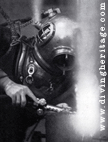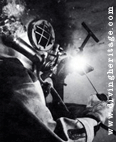SALVAGE:
In-Water INSPECTION:
- REASONS for Inspection
- Survey Inspection EQUIPMENT
- VESSEL In-Water Surveys
- Marine INFRASTRUCTURE Surveys
- MOORING Survey Inspection
- General Survey Inspections
- CORROSION Inspection
- Measuring Metal Thickness
- R.O.V. Inspection
In-Water CLEANING:
- WHY Cleaning? HOW to clean?
- HULL and RUDDER
- PROPELLER (cleaning/polishing)
- Marine INFRASTRUCTURE
- Sacrificial ANODES
- Water JETTING (high and low pressure)
In-Water REPAIRS, MAINTENANCE:
- Shipwork
- Cofferdam
- Marine INFRASTRUCTURE (overview)
- Single Point Mooring System (CALM & SALM)
- Wet WELDING & CUTTING
CIVIL WORKS & ENGINEERING:
- Dredging & Excavation off small BARGE
- Dredging, Jetting, Air-Lift, Dewatering by DIVERS
- Underwater DRILLING & BREAKING
- POST, PIPE, HOLLOW Section PILING with Portable hydraulic Hammer
- Maritime CONSTRUCTION
- Maritime DEMOLITION
- Marine OUTFALLS & Diffusers
- PIPELINES installation & maintenance
- Engineering
SEABED & EARTH ANCHORING:
- Cyclone Anchor Lines for rental

- MOORING Line: what's the (best) choice?
- HELICAL / SCREW Anchors information
- SCREW Anchors Mooring Systems
- PIPELING Anchoring
- Jetty & Walkway FOUNDATIONS screwing
- Expending Rock Anchors
- Grouted Rock Anchors
- Instant Foundation Anchors
- Earth Retention
![]()
![]()
Williams Form Engineering Corporation
- TOWAGE, Dive Support Vessel, Barges:
~ ~ ~ ~ ~ ~ ~ ~
Subsidiaries:
~ ~ ~ ~ ~ ~ ~ ~
Other useful Websites:
Diving
- ADAS Training Courses/job/careers
- New Zealand School of Commercial Diving Training
- Commercial Diving New Caledonia
Nautical Institutions
- IMCA International Marine Contractors Association
- BIMCO Baltic & International Maritime Council
- IMO International Maritime Organization
- Institute of Chartered Shipbrokers
- Institute of Marine Engineering Science and Technology
- International Federation of Shipmasters’ Associations
- International Ship Managers’ Association
- Maritime and Coastguard Agency
- Nautical Institute
- Lloyd’s List
Maritime Information

ABC Diving® Ltd
Port Vila, P.O. Box 3242 VANUATU South PacificComplete Diving Services to Vessels & Civil Engineering Industry
Please, contact us for:
SHIP SALVAGE & Recovery
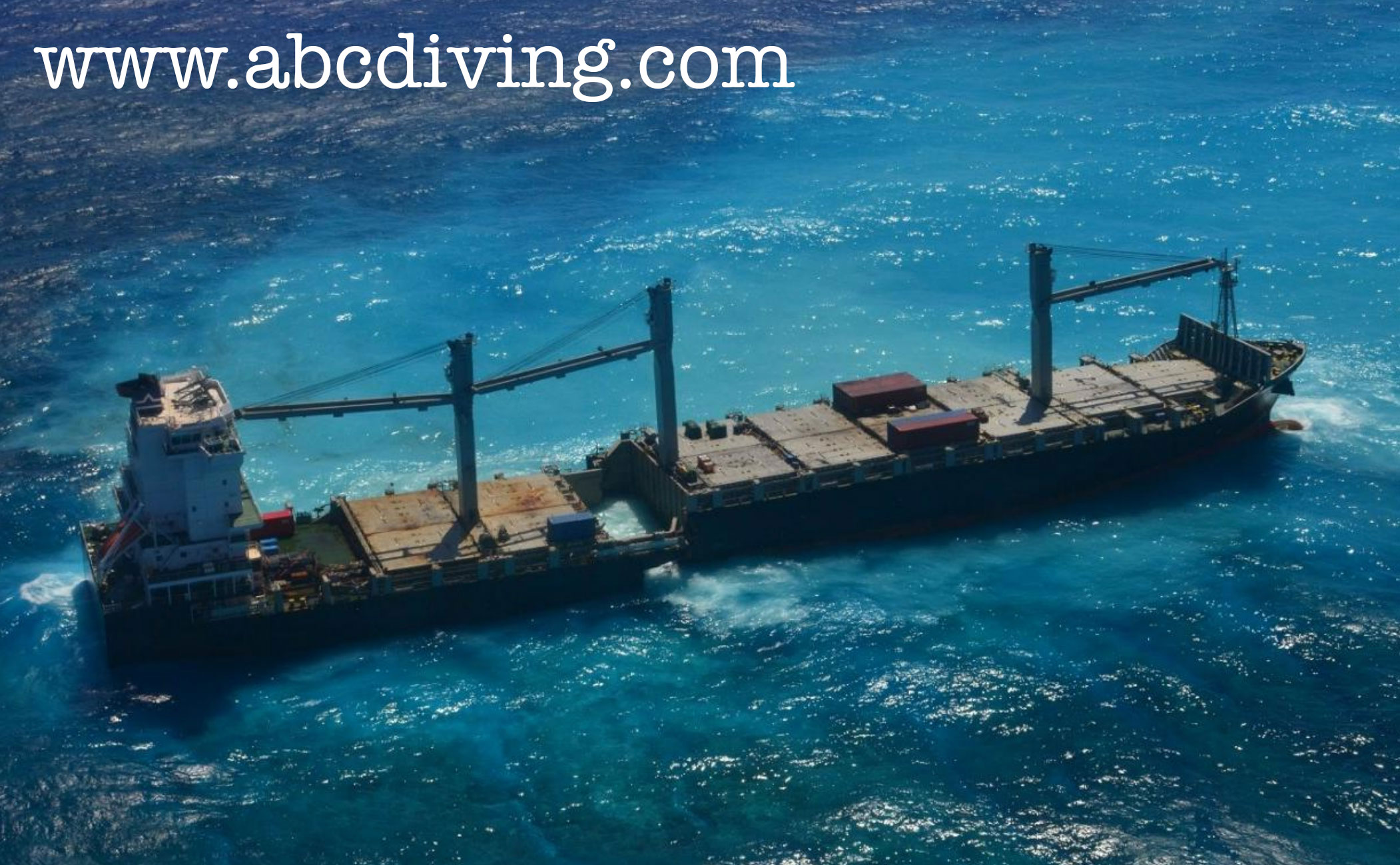
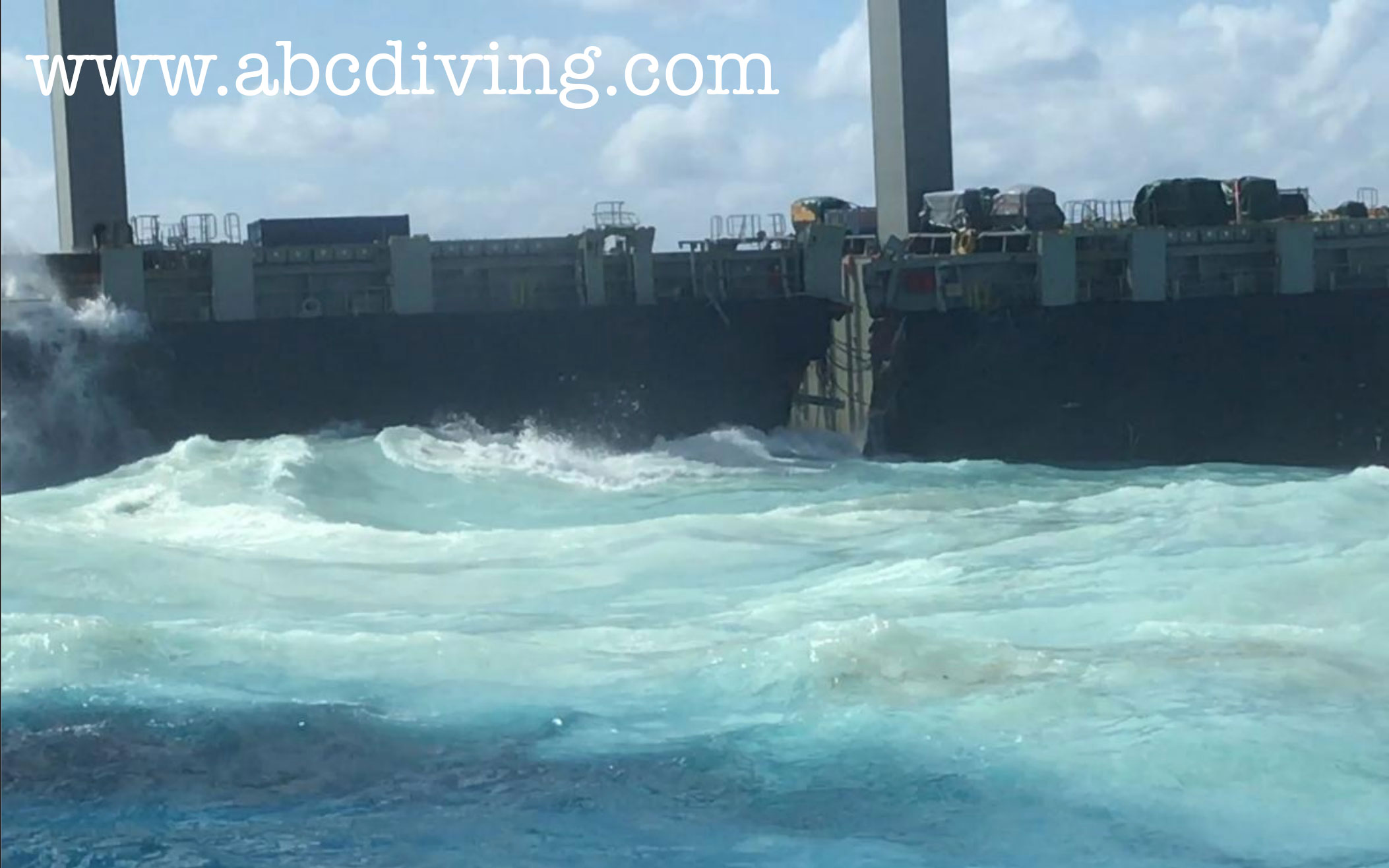
At 0055 on 12 July 2017, the Maltese registered container ship Kea Trader ran aground,
within the hour we started receiving phone calls to intervene in the grounded area
(photos above: Marine Safety Investigation Unit Transport Malta Report)
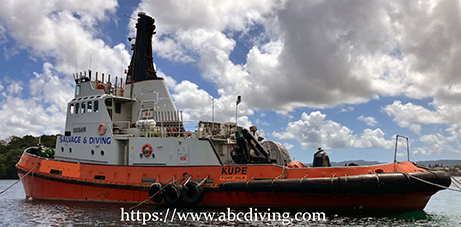


SEAWORKS(Vanuatu) had been involved in major salvage operations with international companies, from the biggest to the smallest.
We offer all salvage solutions from small privage vessels to large tonnage ocean going ships.





A prompt crisis response => 24/7 HOTLINE: +678 7100230
-
REFLOATING: sunken or grounded vessel, barge, aircraft, car, pipeline.
-
EMERGENCY (AFLOAT) SALVAGE:
- Mostly unobtrusive, it involves primarily damage assessment and control work (hull welding, stabilization) and structural bracing.
- Small or large OUTSIDE PATCHING by using a large variety of materials and solutions for pluging water infiltrations.
- Underwater Blankings & Cofferdams
-
RESCUE TOWAGE to a place of safety.
-
CARGO and EQUIPMENT SALVAGE: Cargo may pose an environmental hazard or may include expensive materials, the main focus is on the rapid removal of goods.
-
CLEARANCE SALVAGE:
- Removal of hazardous or unsightly wrecks by the cheapest and most practical method possible (i.e. hull cutting or vessel re-floating).
- Salvage of vessel in a waterway or harbour.
SHIPWRECK RE-FLOATING and REMOVAL (harbour clearance)




Old GRP fishing vessel torn from its mud bed and brought to the surface to clear access to the wharfSHIP UNGROUNDING



Multidirectional Voith Schneider Tractor KUPE in action
SALVAGE AIR LIFT CAPABILITY



Enclosed Structures: Salvage air bags (91 tonnes), Launching air bags (585 tonnes), JW Enclosed bags (40 tonnes,
Open Structures: Parachutes (150 tonnes).





CRANAGE CAPABILITY
Tug KUPE: 1,000 kg @ 6.5 m. Tug LT-801: 680 kg @10.6 m. On shore: 60 tonnes on wheels.




Salvage Tug Mobilisation (KUPE is usable as Dive Support Vessel).




60 tonnes crane
DE-WATERING CAPABILITY




Powerful Fire Pump with Merryweather "Aquator". Submersible Hydraulic Trash Pump (capacity 800 gpm / 3028 lpm).
UNDERWATER PATCHING CAPABILITY



Suprafix underwater patching too
Voith Schneider Tractor (VST) CAPABILITY
-
A sensitive thrust in any direction without changing her heading
-
A capability to manoeuvre large vessels into confined channels and docks
-
A large protection guard beneath the propellers allowing an increasing bollar pull even in shallow water



Voith Schneider Tractor KUPE (32 m x 9 m, 302 GT): the state-of-the-art in Ship Handling and Salvage
Based in PORT-VILA (Vanuatu) we are operational H24 to get under way and perform in crisis demand situations.
We can give assistance to all vessels by fixing hull suffering from damage (underwater patching on all materials), engineering issues (propulsion & hydraulic systems), etc..
A few groundings of ships for which SEAWORKS (Vanuatu) was contacted:



Vanuatu



Cook Islands and French Polynesia

Salvage of the Container Ship KEA TRADER 185 m x 30 m, GT 25,145 (Durand Reef New Caledonia).
SEAWORKS (Vanuatu) was diving contractor for ARDENT Global (the Netherlands).
ORIGIN of the word SALVAGE
Mid 17th cent. (as a noun denoting payment for saving a ship or its cargo):
from French, from medieval Latin salvagium, from Latin salvare ‘to save.’ The verb dates from the late 19th cent.
Salvage encompasses rescue towing, re-floating a sunken or grounded vessel, or patching or repairing a ship.
The aim of the salvage may be to repair the vessel at a harbour or dry dock, or to clear a channel for navigation.
Another reason for salvage may be to prevent pollution or damage to the marine environment.
Alternatively, the vessel or valuable parts of the vessels or its cargo may be recovered for its resale value, or for scrap.
Offshore Salvage
The re-floating of ships stranded or sunk in exposed waters is called offshore salvage.
In this type of salvage, vessels are exposed to waves, currents and weather and are the most vulnerable and difficult to work on. They also tend to deteriorate more rapidly than such vessels in protected harbours.
Offshore salvage may provide only a short window of opportunity for the salvage team due to unusually high tide or inclement weather for instance. The work window may not come around again for as long as weeks or months and in the interim, the vessel will continue to deteriorate. As a result, it is often imperative to work quickly.
Typically, offshore salvage is conducted from pre-outfitted salvage vessels and tugs. In addition, portable diving facilities may be transported by helicopter or small boat to the work area.
From a tactical point of view, working in unprotected waters is less hospitable for floating cranes, construction tenders, dredges and equipment barges. Plus, it is often difficult to depend upon a stable workforce (welders, carpenters, etc..) as all personnel must be present on site for the duration.


Harbour Salvage
The term harbour salvage refers to the salvage of vessels stranded or sunk in sheltered waters.
Such vessels are not normally subject to the same deterioration caused by marine and weather conditions as offshore salvage vessels are. In addition, unless the vessel to be salvaged is obstructing navigation, then there is no need to work as swiftly as in offshore salvage. Also, harbour pre-salvage survey and planning stages tend to be less time consuming and environmentally dependent. It is also easier to gain access to local labour resources and heavy equipment such as floating cranes and barges.
Cargo and Equipment Salvage
Saving the cargo and equipment aboard a vessel may be of higher priority than saving the vessel itself.
The cargo may pose an environmental hazard or may include expensive materials such as machinery or precious metals.
In this form of salvage, the main focus is on the rapid removal of goods and may include deliberate dissection, disassembly or destruction of the hull.
Wreck Removal
Wreck removal focuses on the removal of hazardous or unsightly wrecks that have little or no salvage value.
Because the objectives here are not to save the vessel, the wrecks are usually re-floated or removed by the cheapest and most practical method possible. In many cases, hazardous materials must be removed prior to disposing of the wreck.
The most common techniques used in wreck removal are cutting the hull into easily handled sections or re-floating the vessel and scuttling it in deeper waters.


Afloat Salvage
The salvage of a vessel that is damaged but still afloat is called afloat salvage.
This type of salvage is mostly unobtrusive and involves primarily damage control work such as hull welding, stabilization (rebalancing ballast tanks and shifting cargo) and structural bracing.
The vessel can remain underway with little disruption to its original purpose and crew.
Clearance Salvage
Clearance salvage is the coordinated removal or salvage of numerous vessels in a harbour or waterway.
It typically follows a catastrophic event such as a tsunami or cyclone (i.e. Cyclone PAM force 5, in Vanuatu - March 2015).
There may be multiple vessel obstructions with varying degrees of damage due to strong wind and collisions.



Draft Reducing
We can provide a fast and efficient solution to reduce the draft of any vessel by using specific inflatable bags.



°°°°°°°°°°°°°°°°°
